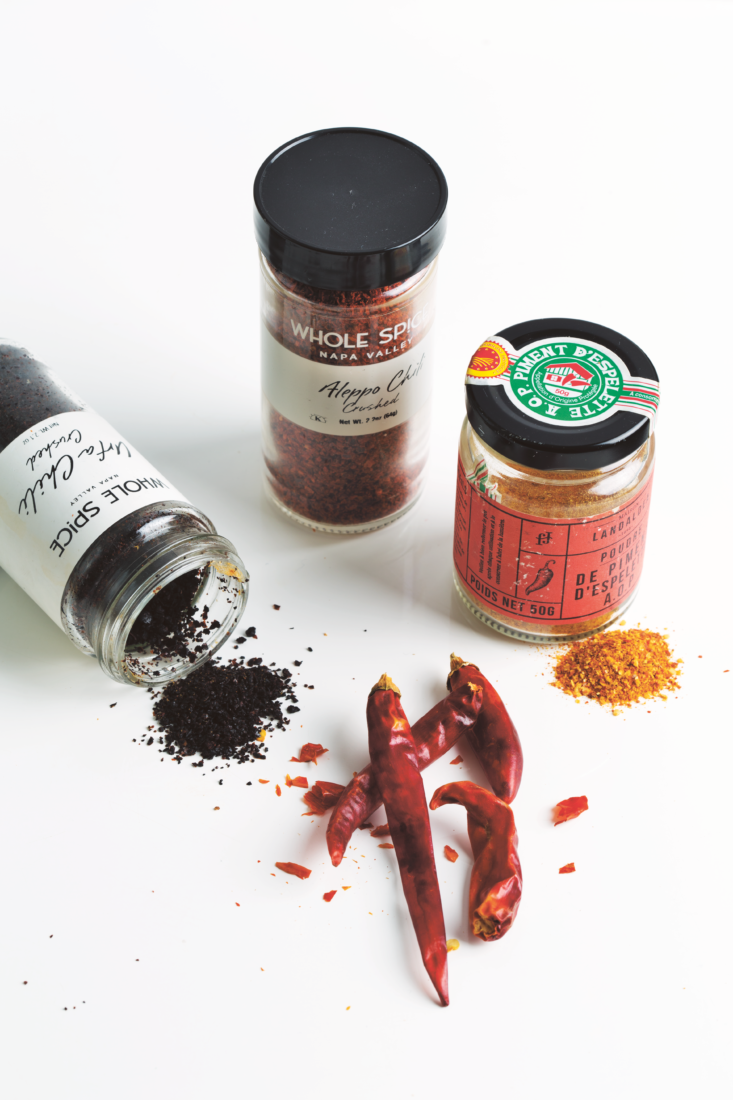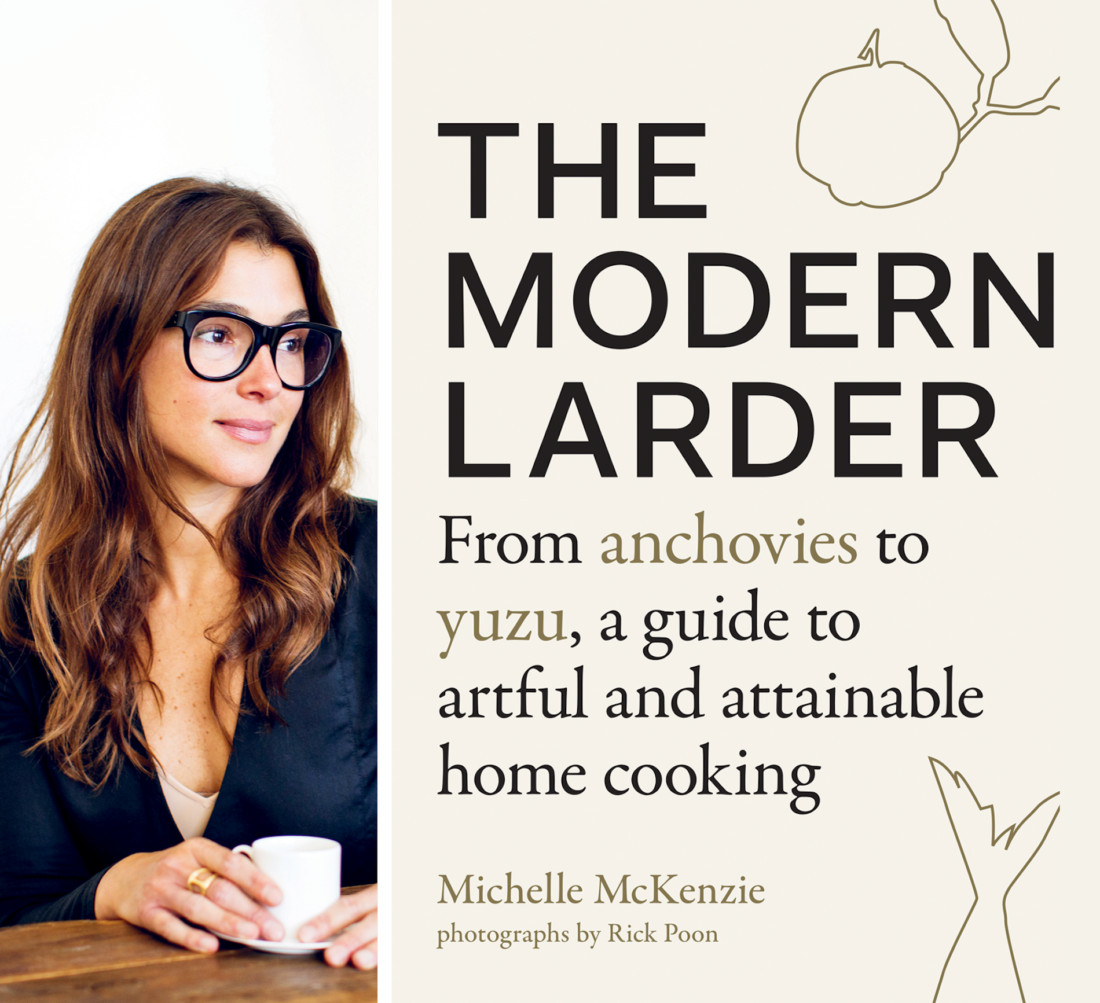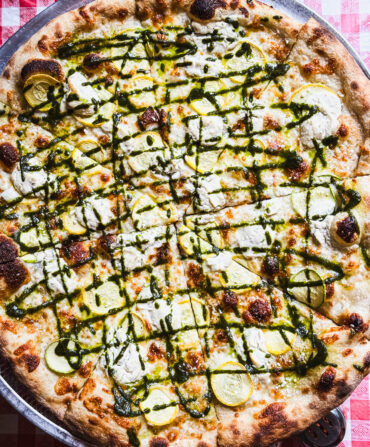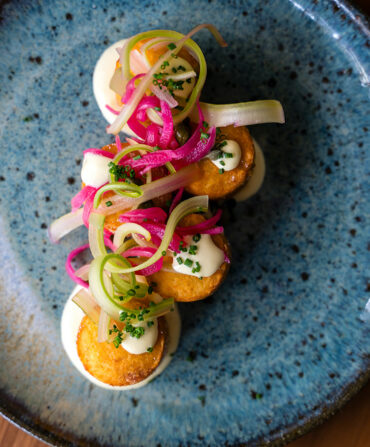Consider today’s home kitchen pantry. Chances are, you’ve got a few what-the-heck-do-I-do-with-this foods—a spice you tracked down for one recipe; a tin of flaky salt someone brought back from a vacation; an infused vinegar lurking in a back corner; a small sack of heirloom beans or grains; a jar of pickled something or other you forgot about on the fridge door shelf.
In her beautiful, practical, and inspiring new cookbook, The Modern Larder, Michelle McKenzie shares tons of ideas for recipes that make use of these ingredients. McKenzie, who grew up in Hendersonville, Tennessee, and graduated from the University of North Carolina at Chapel Hill with a degree in nutrition, has worked as a professional cook and was the longtime program director at a cooking school in San Francisco. Her knowledge of ingredients is both deep and inspiring. We chatted with McKenzie about what she’s learned about today’s cooks, her favorite Southern staples, and the bright and yummy duck recipe she was generous enough to share.

What inspired the focus of this book?
When I was teaching classes in San Francisco, I would notice that if I went off on a tangent about something like crème fraiche and ways you could use it, people would just light up. People get really excited to use up what they have, and to try new things. I would go deep on one ingredient and say, “It’s no big deal to swap in something new or use an ingredient in a different way.” I’d show people how to think about walnut oil in the same way they think about a fine olive oil. There are some ingredients that we might consider to be super rare and special, but they’re ordinary somewhere. So I started the book out with a thorough listing of these pantry ingredients before the recipes themselves. I wanted to create a book that was useful for home cooks to figure out how to enliven their weeknight meals with these new pops of joy. It adds a bit more texture to your life, the beauty in a new flavor. But I also have a three-year-old, so there’s a very human element here—none of the recipes are too complicated. They just might have a new ingredient or two.
What would you say makes up a classic Southern larder?
Lard. [Laughs.] Page sixty of the book is the introduction to how I use lard. It might feel out of favor in some parts of the U.S., but I still believe lard is a good ingredient that can create unbeatable textures. I usually use my own rendered fat. If you’re cooking a big roast, pork chops or bacon, save your fat. I have country style pork ribs in the oven right now. After they braise and come to room temperature, I’ll put it in the fridge, skim off all the hard fat, and put it in a little jar and I will cook with that. Like my grandfather in the mornings, I’ll fry eggs with that fat. He used to fry cornbread with it. You can also befriend a butcher. Sometimes they’ll give you frozen scraps or fat you can render for free.
Dairy of all sorts is also a staple in the Southern larder. I grew up eating sour cream, crème fraiche, buttermilk. It’s hard to find real buttermilk, which I grew up with and love. When you make butter and churn the cream into butter, you have liquid that’s leftover and that’s buttermilk. But a lot of the big brands will just add a souring agent to regular milk. Besides what you can find locally or at a farmer’s market, the only big brand I’ve found that makes real buttermilk is Kalona. (A tip—if you can’t find real buttermilk for a recipe, kefir thinned out with a little water also works.)
Chiles are also often in a Southern larder. It depends on where in the South you’re from, but you’ll often find hot peppers in chicken, sauces, chow-chow…When I was pregnant with my son, I had an aversion to typical black pepper. So I had to find a new way to get that heat in my cooking. I got very into chile de árbol and Aleppo pepper. When I was working on the book, I always remembered that when you push someone into new territory, it helps to have something familiar or else it’s too overwhelming. So I write about where you would usually use black pepper, consider using a new kind. For example, when you’re finishing your corn on the cob, just sprinkle a little Aleppo style chile on there for a nice heat.
I’ve found that the Southern larder isn’t just one typical thing. In Nashville, where my dad lives, there are tons of great Thai markets to get dried shrimp and fish sauce, and lots of great stores and access to ingredients.

You emphasize how important it is to check the date on your ingredients.
Make sure it’s fresh or it’s not going to do the thing it’s meant to do. Better to not season at all than to season with an acrid or stale something.
There are also a ton of just really down-to-earth tips…
I mean there’s a whole section on toast. I hope people will get into the practice of regular cooking. If you get into the swing of things, prepping an ingredient the night before becomes a thing you always do, like brushing your teeth. Every night I either soak beans or salt meat—I don’t even know what I’ll use them for, but getting ingredients ready is just part of life’s routine.
Any Southern brands you want to shout out?
Anson Mills—I’m putting a new freezer in my basement just for Anson Mills products. Their rice flour is my go-to when I’m cooking for myself. I love their heirloom wheats, their farrow, and their rice, beans, and peas. Their buckwheat flour is the best—and over the years, I’ve tried so many. I also love Oliver Farm that makes benne seed oil.

What recipes in your book do you think Southerners would be particularly drawn to?
There’s a whole spread on dips that I think you’ll love, and a whole spread on meatballs. There’s also a great easy olive oil cake, which reminds me of my Tennessee grandmothers. My dad told me that when he was young, his grandmother’s door was always open. Kids knew that after school, they could come to the house and there would always be a cake or a pie they could have a slice of. Now people don’t always have the time that my great-grandmother had, but this easy olive oil cake kind of ties to that feeling of always having something sweet for neighbors and friends.
And there’s a duck leg recipe—it’s the combination of honey and preserved lemon that does it. I love honey with any game meat, there’s something about the sweetness that tempers and complements game. The preserved lemon adds a brightness that doesn’t go away. When you add lemon juice at the end of a dish, it dissipates. If you reheat it later, you would need to add lemon juice again. But preserved lemons, which are so easy to find and also to make—just sliced lemons packed with salt and allowed to sit—keep that brightness throughout the whole dish. And if you have leftovers or make more than you need, shred the meat up for tacos the next day.
Find McKenzie’s recipe for Easy Roast Duck Legs with Preserved Lemon and Honey here.








